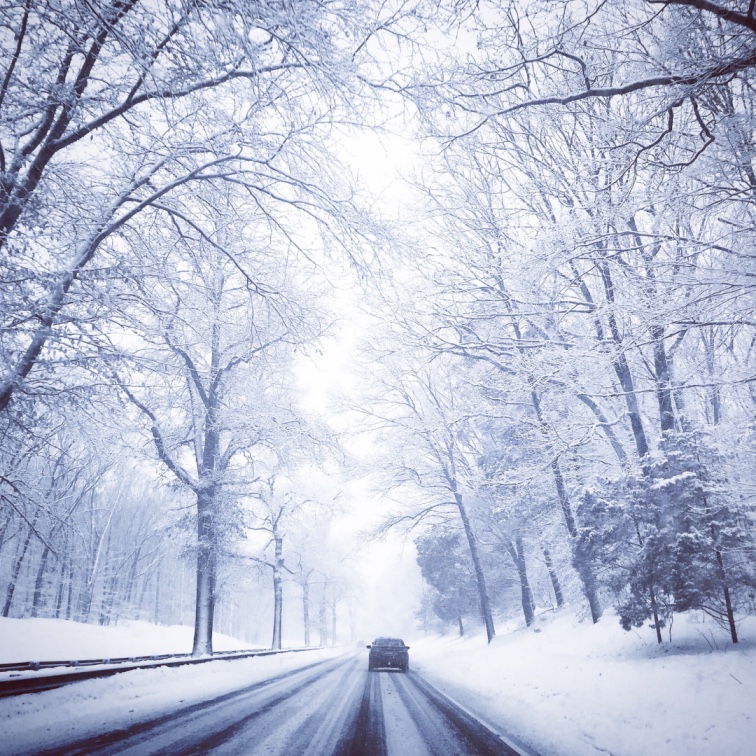
Driving in winter conditions can be intimidating, especially for beginners. Snow, ice, and low visibility create challenges that require extra caution and preparation. Whether you’re facing your first winter behind the wheel or just want a refresher, this guide will help you navigate winter roads safely and confidently.
Preparing Your Car for Winter Driving
1. Check the Weather Before You Leave
Always check the forecast before heading out. If there’s a winter storm warning, consider postponing your trip. Even if the roads look fine now, conditions can change rapidly. Use weather apps, listen to local news, or check traffic updates for real-time road conditions.
2. Inspect Your Vehicle Before Every Trip
A well-maintained car is crucial for safe winter driving. Here’s what to check:
- Tires: Ensure they are properly inflated and have enough tread (at least 5/32 inches). Winter tires provide better grip on snow and ice compared to all-season tires.
- Battery: Cold weather drains battery power, so have it tested to ensure it’s in good condition.
- Brakes: Get your brake system checked to avoid any surprises on icy roads.
- Fluids: Keep your gas tank at least half full to prevent fuel line freeze-up, and top off your windshield washer fluid with a winter-grade solution.
- Lights & Wipers: Ensure your headlights, brake lights, and turn signals are working. Use winter wipers and replace them if they streak or skip.
3. Keep an Emergency Kit in Your Car
Winter weather is unpredictable, and being prepared can make all the difference. Your emergency kit should include:
- Warm blankets, gloves, and extra clothing
- Non-perishable snacks and bottled water
- Flashlight with extra batteries
- Ice scraper and snow brush
- First-aid kit
- Jumper cables
- A small shovel and sand or cat litter (for traction if you get stuck)
- A fully charged phone or a car charger
Safe Driving Techniques for Winter Roads
4. Drive Slower Than Usual
Speed limits are set for ideal conditions, not snowy or icy roads. Reduce your speed and allow extra time to reach your destination. The faster you drive, the harder it is to control your vehicle on slippery surfaces.
5. Increase Following Distance
Normally, you should follow the three-second rule (staying three seconds behind the car in front of you). In winter, increase that to at least six to eight seconds. This gives you more time to react if the vehicle ahead suddenly stops or slides.
6. Accelerate and Brake Gently
Sudden movements can cause skidding. Press the gas and brake pedals smoothly and gradually. If you need to slow down, ease off the accelerator instead of slamming the brakes.
7. Avoid Sudden Turns or Lane Changes
Quick steering movements can cause you to lose control. Plan your turns in advance, signal early, and make slow, deliberate movements.
8. How to Handle Skids
Skidding is one of the scariest experiences for new winter drivers. If your car starts to slide:
- Stay calm and don’t panic.
- Take your foot off the gas. Let the vehicle slow down naturally.
- Steer in the direction you want to go. If the rear of your car is sliding left, turn your steering wheel left. If it’s sliding right, turn right.
- Do NOT slam the brakes! If you have anti-lock brakes (ABS), apply steady pressure. If you don’t have ABS, gently pump the brakes to prevent locking up.
9. Use Lower Gears on Slippery Roads
Using lower gears helps maintain traction, especially on hills or when going downhill. Many automatic vehicles have a low gear option (“L” or “2”) that can help in slippery conditions.
10. Be Cautious on Bridges and Overpasses
These areas freeze faster than regular roads because they’re exposed to cold air from all sides. Approach them with caution and avoid sudden braking or acceleration.
11. Watch for Black Ice
Black ice is nearly invisible and extremely slippery. It often forms on shaded areas, bridges, and overpasses. If you hit black ice:
- Keep your hands steady on the wheel.
- Don’t brake suddenly. Let the car slow down on its own.
- If necessary, tap the brakes gently to maintain control.
Additional Winter Driving Tips
12. Avoid Using Cruise Control
Cruise control is great for dry roads, but it’s dangerous on icy or wet surfaces. It can cause your car to accelerate at the wrong moment, making it harder to react quickly.
13. Keep Headlights On for Better Visibility
Even during the day, using your headlights in snowy or foggy weather improves visibility for you and other drivers.
14. Avoid Stopping on Hills
If you stop on a hill, you may struggle to regain traction. Try to keep a steady speed and avoid stopping unless necessary.
15. Stay in the Right Lane When Possible
The right lane is often less icy than the left since snowplows tend to clear it first. Also, slower-moving vehicles are expected in the right lane, reducing the risk of aggressive drivers tailgating you.
16. If You Get Stuck, Don’t Spin Your Wheels
If your tires spin in place, stop pressing the gas—it will only dig you in deeper. Instead:
- Gently rock the car back and forth using low gear and reverse.
- Use sand, salt, or cat litter under the tires for extra grip.
- If possible, have someone help push the car while you apply light acceleration.
What to Do If You Get Stranded
If you get stuck in heavy snow or your car breaks down:
- Stay in your vehicle. It provides shelter and is easier to find than a person walking in a storm.
- Call for help. Use your phone to contact emergency services or roadside assistance.
- Run your engine periodically for warmth. Turn it on for 10-15 minutes every hour, but crack a window slightly to prevent carbon monoxide buildup.
- Signal for help. Use hazard lights or tie a bright cloth to your antenna to make your vehicle more visible.
Final Thoughts
Winter driving requires patience, preparation, and caution. By following these tips, you’ll reduce your risk of accidents and feel more confident behind the wheel. Remember, safety always comes first—if conditions are too dangerous, stay home.
What winter driving challenges have you faced? Share your experiences in the comments below! Need motivation help do not hesitate to reach out to us or visit our website at Westmount driving School.
